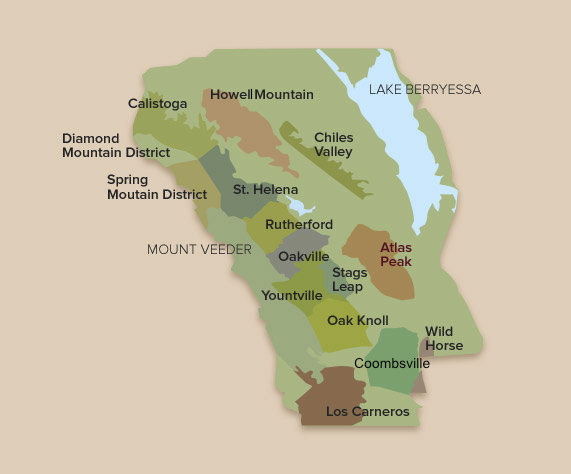Appellations

Chiles Valley Appellation (AVA)
Chiles Valley Climate: Fairly warmer summer days (mid-80°F plus/28.8 to 31°C), but due to higher elevation and summer fog at night, quite chilly at night (below 50°F/10°C). With colder winters and spring, as well as strong winds, harvest comes later than on valley floor at Oakville.
Elevation: 800 to 1300 ft. (242 to 394m).
Rainfall: 35 inches (88cm) annually.
Soils: On the valley floor, primarily alluvial soils with silty-clay composition of marine origin, with good fertility. Hillsides show more clay-loam and stony-clay composition, mostly marine in origin, with some volcanic outcropping, and less fertility.
Principal varieties & characteristics in the Chiles Valley Appellation: Cabernet Sauvignon, Merlot, Cabernet Franc: Cabernets usually reveal a lush yet firm texture with good acidity, firm tannin and distinctive cherry-blackberry flavors. Merlot typically has vibrant black cherry flavors mixed with a touch of cocoa.